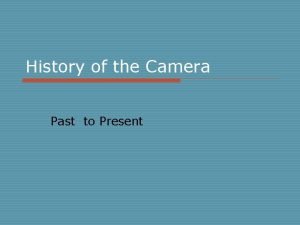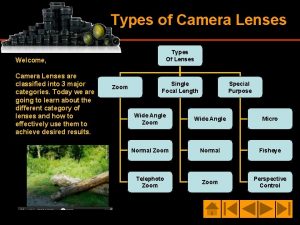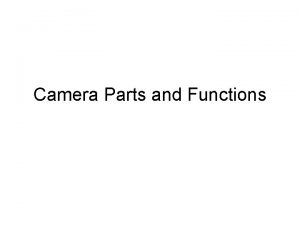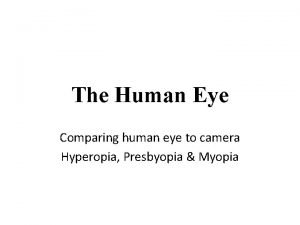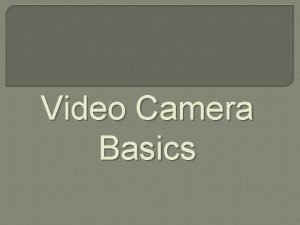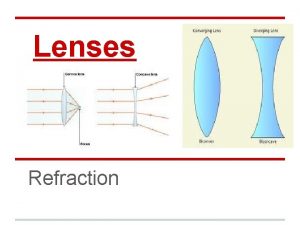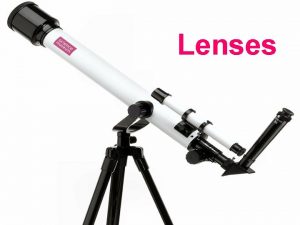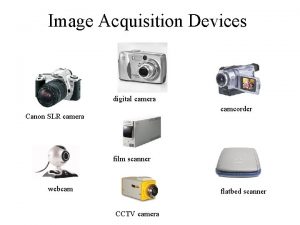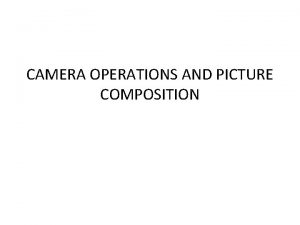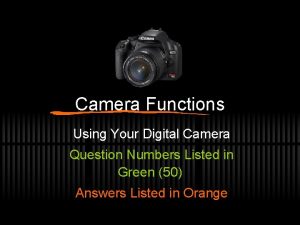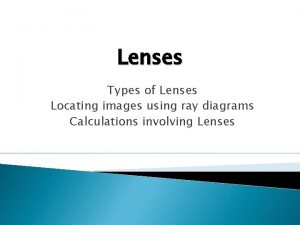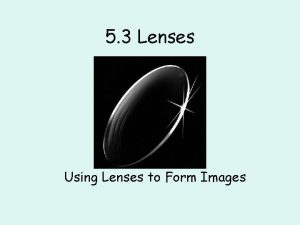Camera Functions Using Your Camcorder Camera Lenses 2












- Slides: 12

Camera Functions Using Your Camcorder

Camera Lenses 2 Classifications for function *focal length *speed

Zoom Lens: ü This refers to the focal length. ü Wide angle= shows a wide vista, with the far objects looking small (zoom out) ü Telephoto= shows narrow portion of the scene, background objects appear larger than the foreground objects (zoom in)

Iris/Aperture ü = an adjustable opening in a camera’s lens. ü It controls the amount of light that passes through the lens, and functions in much the same way as the pupil of an eye. ü Bigger opening = more light (do this when there is limited light) ü Smaller opening = less light (do this when there is excess light)

Large Aperture Large Small 3 Small

F-Stop: ü = the standard by which we measure how much light is admitted through the lens. ü Lower # = larger the aperture and more light is transmitted through the lens/

Apertures

Aperture Sizes Smaller numbers = larger apertures Larger numbers = smaller apertures

Depth of Field =refers to how much of a photo from foreground to background (zaxis) is in focus. Short for “the depth of the field of focus” Large Aperture f/2. 0 = Shallow DOF Background out of focus Smaller Aperture f/11 = Larger DOF Background more in focus

Shallow DOF ü Blurriness due to a shallow DOF can also occur in the foreground depending on where you focus!

Large Depth of Field ü Everything is in focus from foreground to background. ü Good for landscapes ü Small aperture f/16 or f/22

Depth of Field 14 ü DOF is determined by 3 factors: ü 1. Aperture ü 2. Distance from subject (the closer you are, the shallower the DOF) ü 3. Camera’s focal length (longer lens = shallower DOF) Large DOF Shallow DOF

